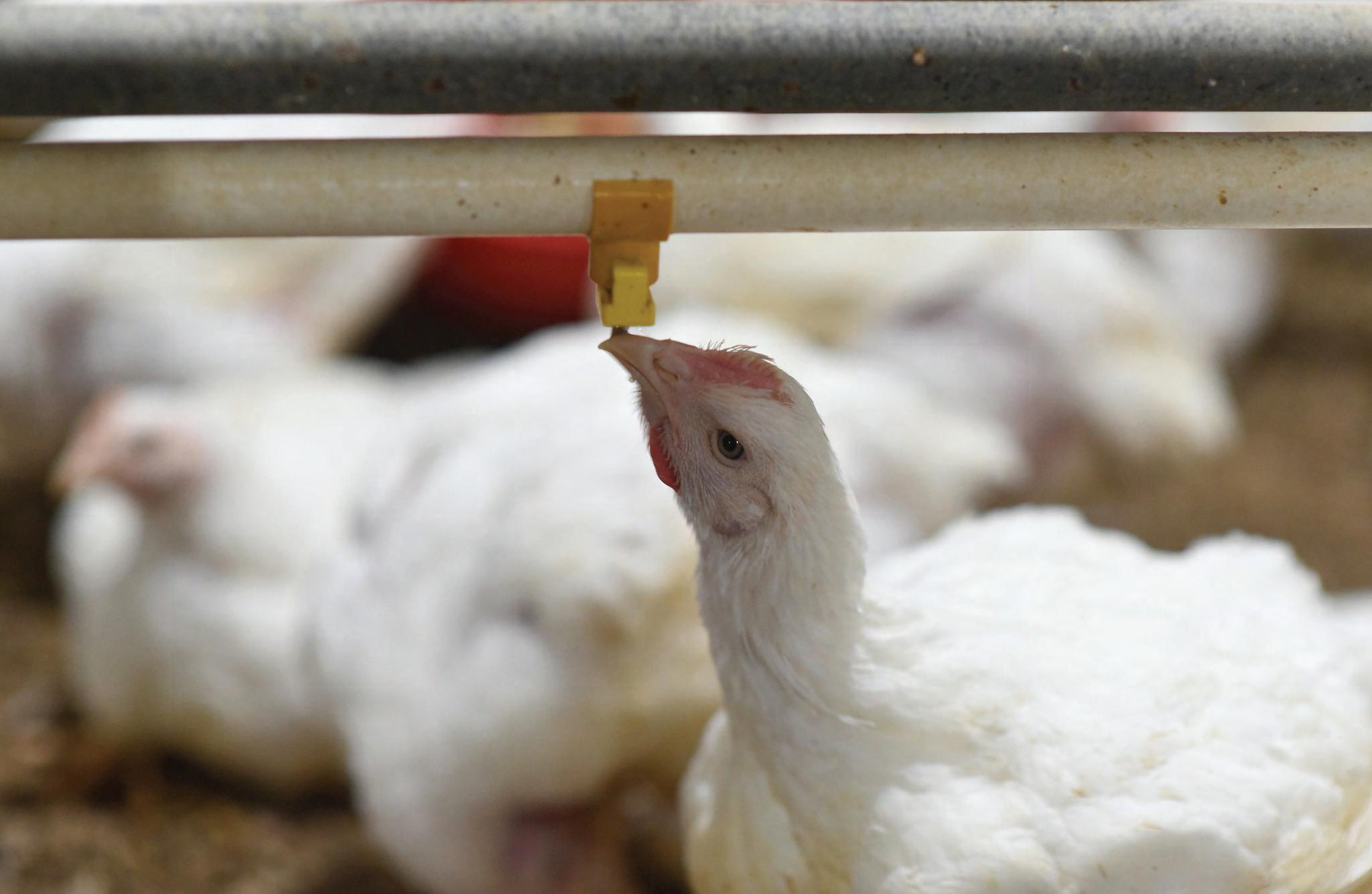
2 minute read
Do More with Less: Producing more chicken and a lighter footprint
BY HOLLY PORTER
DELAWARE’S FAST-GROWING Kent and Sussex counties are where Delmarva’s broiler chicken industry was born in the 1920s and remains crucially important today. Those counties have added more than 100,000 residents in the past 20 years. To keep up with America’s appetite for chicken – and indeed the world’s – Delmarva chicken production, measured by weight, has grown about 1.75 percent a year in that time. That runs behind the pace of human population growth, which has been two percent a year. Simply put, southern Delaware is adding people faster than it’s adding chickens.
In fact, it is subtracting chickens, according to economic data we at Delmarva Chicken Association collect each year. Farmers and chicken companies on Delmarva are raising and processing 5 percent fewer birds a year than 20 years ago – not more. So how are we still increasing the pounds of chicken we bring to market? By being more efficient throughout the supply chain, raising larger birds, and improving bird health. “Do more with less” is a cliché, but the chicken community is truly putting it into practice.
All this is important context to bring to discussions about Delaware’s chicken economy, environmental sustainability, and our ever-growing region. Operating in the watersheds of the Chesapeake Bay and Delaware’s Inland Bays, our farmers are on the cutting edge of agricultural practices that protect water quality. Since the 1980s, farmers’ commitments to sustainable practices have reduced agricultural nitrogen and phosphorus loads to the Chesapeake Bay by 25 percent, even as the chicken community invests in growth to meet consumer demand for chicken.
There are fewer chicken farms, and fewer operating chicken houses, on Delmarva today than there were 20 years ago, but today’s farms are more efficient – and chicken growers continually improve their environmental stewardship. It takes 39 percent less fossil fuels and 58 percent less water to produce the same amount of chicken as it did in 1965, for instance. Check out a video showcasing what sustainability means to Delmarva’s chicken farmers at tinyurl.com/chickensustain.
Recently, Delmarva Chicken Association partnered with environmental groups and the National Fish & Wildlife Foundation to develop littr., a mobile app that connects chicken growers who can supply litter with farmers who want it. Field-spreading chicken litter – the wood chip-based bedding of a modern chicken house – is a great way to supply nutrients to crops like corn, wheat, and soybeans. Those crops in turn are milled to make chicken feed. Protecting water quality means making sure litter doesn’t go onto farm fields that already have sufficient nutrients in the soil, and more than 95 percent of chicken litter is recycled to fertilize crops. Our app makes it easier to make the connections that ensure litter goes to farms where the soil can most benefit.
Chicken growers and the companies they raise birds for have risen to the challenges placed before them, managing to feed more people while shrinking their environmental footprint. n
Holly Porter is the executive director of the Delmarva Chicken Association.










